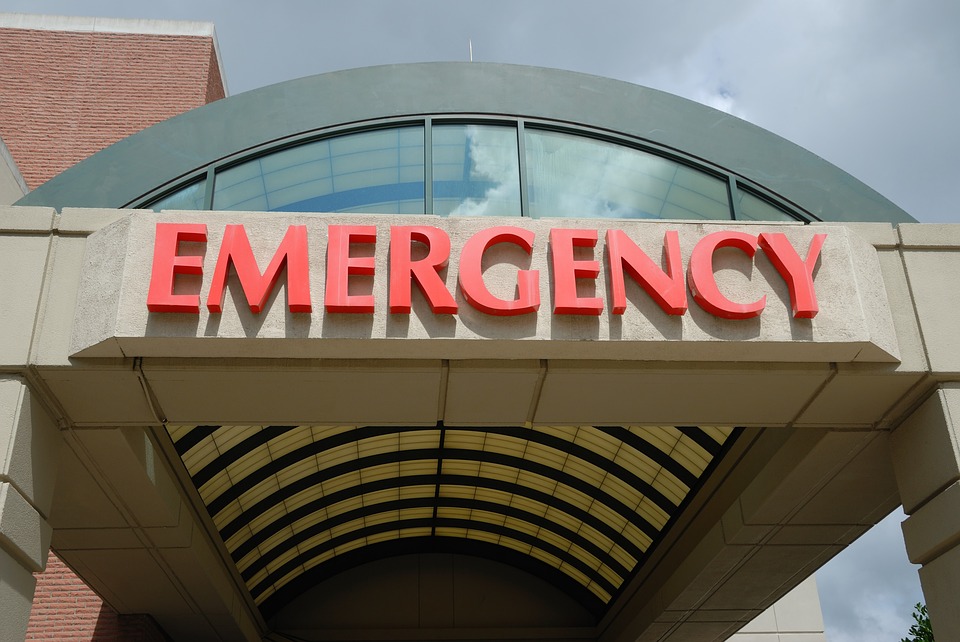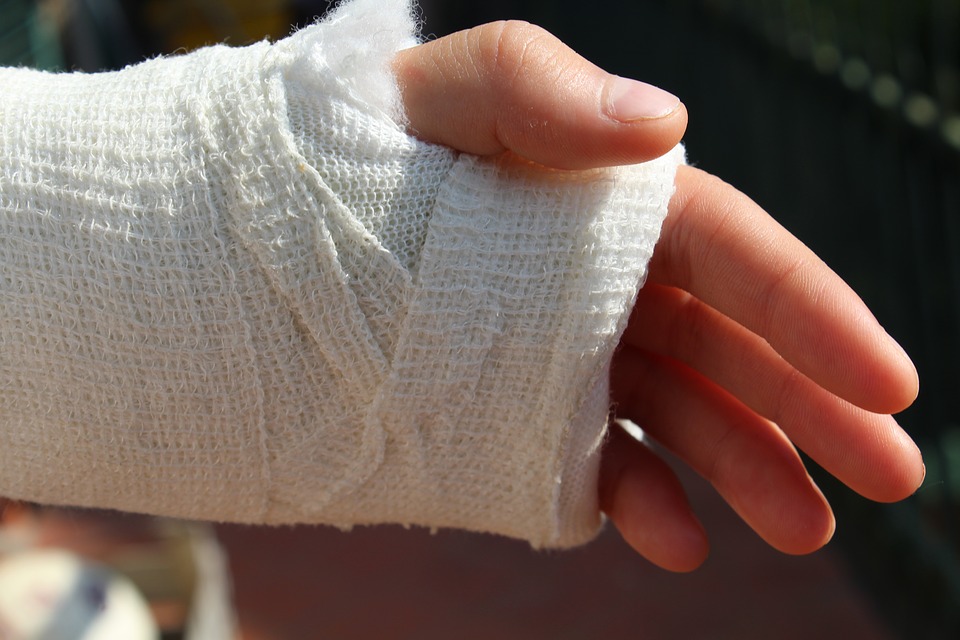 Using English at the Doctor’s
Using English at the Doctor’s
Health and medical vocabulary is one of the most vital areas of language to learn when visiting or living in a foreign country. You never know when you might need to visit the doctor or a hospital, so it’s important to be prepared with some basic medical vocabulary.
When discussing illnesses and other issues with a medical professional, there are certain words and phrases we need to use. This will be most commonly used when speaking to a doctor or nurse.
For non-native speakers, using English at the doctor’s can be a challenging task. Read on to explore the common health and medical vocabulary used at the doctor’s and phrases you may hear and need to use at an appointment with a nurse or doctor.
Medical vocabulary for the doctor’s surgery
One of the first areas of health and medical vocabulary to cover would be parts of the body. When you know the words for different body parts in English, you will be able to explain where the pain or problem is. Explore our Human Body page for a more in-depth guide to the body parts and how to describe them from an anatomical standpoint.
Human body parts:
- Head, face, eyes, eye lashes, eye brows, nose, nostrils, ears, lips, mouth, tongue, chin, cheeks, forehead, hair
- Neck, shoulders, chest, breasts, back, spine, arms, elbows, wrists, hands, fingers, knuckles, finger nails
- Stomach, abdomen, hips, bottom/backside, thighs, knees, shins, calves, ankles, feet, heels, toes, toe nails
- Muscle, tendon, bone, skeleton, spine, vein, artery, brain, heart, liver, kidney, bladder, bowel, lungs, blood, sweat
Describing Pains
Common aches:
Headache, toothache, stomach ache, backache
Digestive complaints:
diarrhoea, constipation
nausea, sickness, vomiting
Throat complaints:
cough, sore throat
‘Something is stuck in my throat’
‘I can’t swallow’ / ‘I’m finding it hard to swallow’
Other problems:
Faintness, tiredness, shortness of breath, cramp
Period pain, menstrual pain, abnormally heavy periods (menorrhagia)
Illnesses:
Influenza (‘flu), a cold, fever, persistent cough
If you are not sure about the right vocabulary, you can simply use the phrase: ‘I have a pain here …’ or ‘it hurts here …’, while pointing to the affected area. This will be enough to explain to a doctor what is wrong.
It is useful to learn some vocabulary for basic body parts so you can explain better what is wrong when talking to the doctor.
When you make an appointment you will usually see a GP (General Practitioner) or a nurse.
If you have a health emergency that cannot wait for an appointment, you should go to A&E (Accident and Emergency) at your local hospital.
Covid pandemic
In 2020, the Coronavirus pandemic caused worldwide health concerns. From a language perspective, it also brought many rare words and phrases into common usage. Read more about this virus and its effects on our society and language in our Coronavirus vocabulary page.

Medical Vocabulary
Diagnosis – after examination, the doctor gives you the diagnosis (identifies the illness you have)
Prescription – an instruction written by a doctor that authorises a patient to be given a specific medicine
Surgery – the operation to fix an internal body part, where the body is cut open and repaired
Incision – a cut with a scalpel (surgical knife) into the skin during surgery
Bandage – a wrap that supports a limb
Cast – a hard casing that supports a broken bone
Ambulance – emergency vehicle that takes a patient to the hospital
Crutches – medical walking sticks that support someone who can’t walk properly, usually due to a broken leg or ankle
Thermometer – a measuring device to assess the temperature
Stethoscope – a medical device used to listen to the internal sounds of the body
Syringe – a medical device like a needle to draw blood or to inject a vaccine
Vaccine – a substance that is injected into the body to prevent a disease (it activates the body’s immune system so that it creates antibodies to fight the disease)
Inoculation / vaccination – the process of injecting a vaccine to immunise the body against a disease

Phrases you might want to use at the doctor’s:
Making an appointment
- I’d like to see a doctor
- I need to see a doctor
- I’d like to make an appointment
- Please can I have an afternoon appointment?
Describing Symptoms
- I don’t feel well.
- I’ve got a pain in my [chest/head/stomach].
- It hurts when I [move/swallow/breathe].
- I’ve been feeling [sick/tired/dizzy] lately.
- I’ve had a [cough/fever/rash] for [two days/weeks].
- I’ve got a stomach ache / sore throat / pain here
- I’ve been feeling sick / ill / faint / tired
- I’ve been getting headaches / diarrhoea / pains
- I have really strong period pain / menstrual pain
Asking for Help
- Can you take a look at this?
- Do I need a prescription?
- Is it serious?
- What should I do next?
- Should I see a specialist?
- Do I have to take time off work?
- Will I get a sick note?
- Will I get a fit note?
During the Appointment
- I’m allergic to [penicillin/pollen].
- I had surgery on this before.
- It’s getting worse/better.
- That medicine didn’t help.
Phrases You Might Hear at the Doctor’s
At reception
Do you have an appointment?
Have you got a European health insurance card?
Please take a seat in the waiting room/area
During the appointment
What seems to be the problem?
How can I help you today?
What are your symptoms?
Can you describe the pain?
How long have you been feeling this way?
Have you had this before?
Are you taking any medication?
I’m going to need to examine you
During a physical examination
Lie down on the bed, please.
Does it hurt? Does it hurt here?
Take a deep breath.
Does it hurt when I press here? Does it hurt when I exert pressure here?
Let me listen to your chest / back (using stethoscope)
I’m going to check/take your blood pressure / temperature / pulse
Let me take your temperature.
I’m going to give you an injection
After the Checkup
I’ll write you a prescription
I’ll prescribe something for that.
I’m going to prescribe some antibiotics
It looks like a mild infection.
You need some rest and fluids.
Come back if it doesn’t improve.
We’ll need to run some tests.
Example Roleplay for a Doctor’s Appointment
Patient: Good morning. I don’t feel well.
Doctor: I’m sorry to hear that. What’s the problem?
Patient: I’ve had a sore throat and a headache for three days.
Dotor: Do you have a fever?
Patient: Yes, a little.
Doctor: I’ll check your temperature. Please open your mouth.
Patient: OK.
Doctor: You have a mild fever. I think it’s a virus. Rest, drink lots of water and take this medicine.
Patient: Thank you, doctor.
Tips for teaching medical vocabulary
Use Role Play
Create realistic doctor-patient scenarios. Start simple, then add complexity (e.g. more symptoms, follow-up questions). Rotate roles to build confidence and fluency.
Gap-Fill Exercises
You could start with model dialogues and let students fill in the blanks in a gap-fill exercise or rearrange lines before performing.
Use Visual Aids
Show pictures of symptoms, body parts or a doctor’s office. Use flashcards or slides to introduce new words in context.
Focus on Functional Language
Teach phrases in chunks (e.g. “I’ve got a headache,” “It hurts when I…”). Prioritise what learners are likely to need in real life.
Gamify It
Try “symptom bingo,” matching symptoms to advice, or “guess the illness” games. Use role-play cards or random symptom prompts for pair work.
Connect to Real-Life Situations
Ask students if they’ve ever needed to visit a doctor in English or abroad. Compare healthcare vocabulary across languages or cultures.
Share your thoughts on medical vocabulary
- Which general phrases do you find most useful when talking to the doctor?
- Have you ever had difficulties communicating with a doctor in an English speaking country?
- What other general health and medical vocabulary would be useful?

